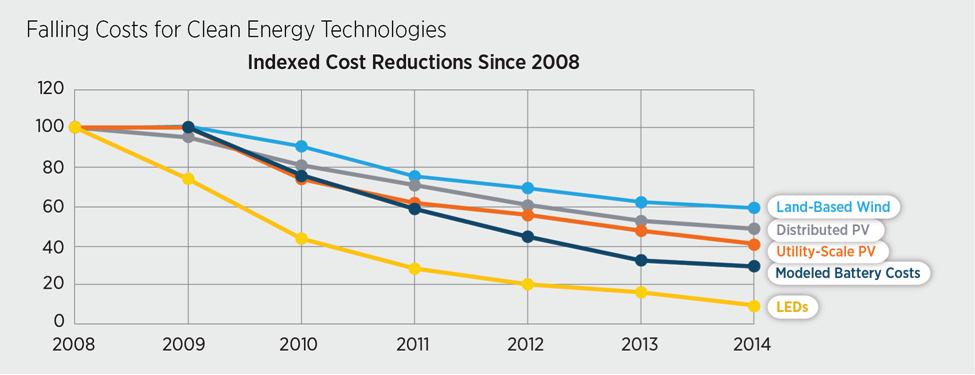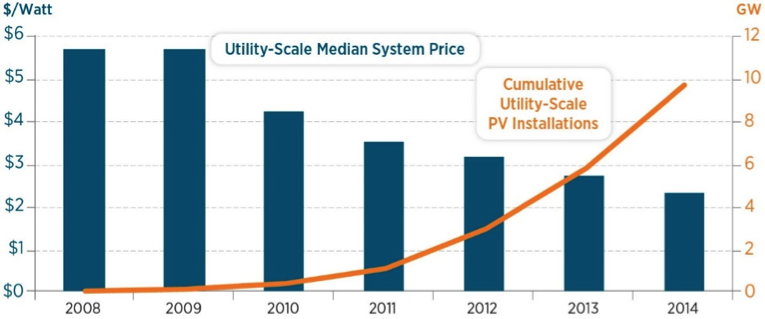
Due to the leadership of President Obama, it is remarkable to see the momentum for action on climate change in the last year. A year ago this week, in a historic joint announcement, President Obama and President Xi of China announced new emission reduction targets – marking the first time China has agreed to peak its carbon dioxide emissions. Since then, more than 150 countries representing around 90% of all global emissions have offered climate pledges. Businesses around the world are acting, and here at home, 81 companies have signed the American Businesses Act on Climate pledge to demonstrate their commitment to climate action and show their support for a successful conclusion in Paris. Likewise, mayors from 281 cities around the world representing 309 million people – including more than 80 cities from the United States – have called for strong global leadership on climate change. These actions are providing support for a strong international climate agreement when the countries of the world convene in Paris in a few weeks.
This momentum is made possible in large part because countries, businesses, cities and individuals are capitalizing on fast-changing opportunities in clean energy. Here in the United States, we’ve seen unprecedented investment and growth in renewable energy – in large part due to Federal investment in these technologies. Since 2008, wind power has tripled and solar generation has increase more than twenty-fold – while the price of these technologies have dropped dramatically. Key sources like solar and wind energy in particular have seen tremendous decreases in prices over the past decade.
In fact, like with many technologies – such as flat screen TVs and smart phones – the more the world builds, the more these prices fall. This progress is highlighted in a report, released today by the Department of Energy, that shows cost reductions for five clean energy technologies: wind, distributed solar, utility solar, electric batteries, and LED-lighting. In less than a decade, prices for these technologies have dropped 40-90%. For example, since 2008, the cost of solar modules has dropped from $3.57 per watt to about $0.71 per watt – lowering total cost of utility scale systems by nearly 60%. At the same time, we increased clean energy deployment from less than 1 GW in 2008 to nearly 10 GW today.


Crucially, the commitments made by countries in advance of Paris will drive costs even lower. Many countries have made explicit commitments to build out new renewables in their energy mix. China committed to increase its non-fossil energy share to 20% by 2030, implying a build out of non-fossil energy of up to 900 GW. Brazil committed to increase its share of non-hydro renewables to 23% by 2030, on top of their already sizeable hydroelectric share. India has committed to build a staggering 175 GW of renewables by 2022 on a pathway to 40% non-fossil capacity by 2030. And these are just a few examples. Around the world, countries, businesses, and cities are committing to build out clean energy as part of a global effort to cut emissions and improve public health.
Another report out today, by researchers at MIT, estimates the impact of all of these commitments on clean energy costs and the results are eye-opening. It finds that the current climate targets could lead to almost a tripling of global wind power capacity and a nearly fivefold increase in solar capacity by 2030. In addition, this massive global buildout of new renewable capacity will drive costs even further below their current competitive levels – an additional 25% drop for wind, and up to a 50% additional decrease for solar. That would mean that these technologies could be less costly than even our cheapest fossil resources
Why is this important? It means that the steps we are taking this year in Paris are big steps not only for their direct impact on global emissions, but also for their impact on global clean energy costs. As countries build out new renewables and implement other forms of clean energy to fulfill their climate pledges, it will drive costs lower and make the economics of clean energy work in even more places. A world in which clean energy is even more competitive will make it possible for countries to make more ambitious pledges to address climate change – helping the world stay on a path to a safe climate, improving the air we breathe, and building a healthy and vibrant economy.


